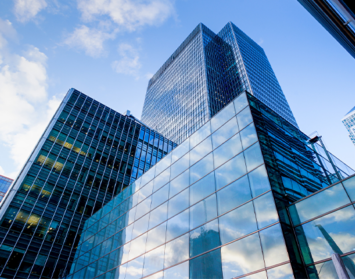Why commercial real estate building sale prices are skyrocketing.
Interviewed by Paul Harvey
The real estate market’s effect on businesses, big and small, is undeniable. When San Diego sees major changes in affordable commercial space, the economic impact is far-reaching.
“Building sale prices are at historic highs, as are asking rents, but the leases we are getting done haven’t changed much, materially, from 2005 and 2006,” says David Marino, principal with The Irving Hughes Group in San Diego.
Smart Business discussed with Marino the causes and effects of the spike in local commercial real estate building sale prices.
What has been driving the record-high sale prices of commercial real estate?
Fundamentally, there is too much money chasing a fairly fixed supply of assets. After the Internet bubble of 2000, institutional investors allocated more money into real estate, which is a hard tangible asset. There has been a flood of capital through pension funds, private equity groups and REITs [real estate investment funds] that has driven the supply of capital out of balance with the asset base’s supply, and institutions rightly bet that commercial real estate was undervalued. Fueling the fire, commercial real estate sellers then reinvest in new assets at inflated prices through tax-deferred exchanges to defer paying capital gains taxes.
We have a financial engineering environment in commercial real estate. REITs have been gobbled up by private equity groups, whereby the assets are then broken up into smaller asset sales where the parts are more valuable than the whole. Most of the buyers of these parts are then other REITs and institutional buyers. In a market of high leverage and low cost of capital, owners are trading on the razor’s edge of cap rates to generate returns through flipping assets rather than operating them. Most of the buyers are from out of town and generally don’t understand the market. But it turns out they don’t have to, since they turn around and sell the asset to someone who understands the market even less.
Other than the supply of capital, what is the rationale of these buyers paying such premiums in San Diego?
The argument is that San Diego is running out of developable commercial land, but I have been hearing that for my entire 18-year career. Someone could say New York City is running out of land, but that has been the case for 100 years and there have been wild swings in asset value over that time. Also, buyers and their brokers argue that San Diego has macro-level job growth and population growth as well as a diversified economy. But most of that job growth hasn’t been in industries that occupy office space, so the translation of jobs and population to the demand for space is relatively weak. They also argue that rents are relatively lower in San Diego than in other major markets around the U.S., and investors believe there is room to push for rent increases. However, with the cost of labor, taxes, gas and living in San Diego, rents need to be affordable for tenants so that businesses will continue to start and grow in San Diego. Shockingly, some of these investors are putting 10 percent annual rent inflation in their pro formas.
Do you see the landlords getting these inflated prices?
No, but they have to build a pro forma that justifies hyped-up purchase prices. The reality is that virtually none of these landlords are making money on the cash flows from commercial real estate. They are buying with huge leverage and low-cost financing and then selling at a profit a year or two later. It’s sad to me that many of these investors really don’t care about the tenants or the tenants’ businesses or about putting capital into the buildings to make them better facilities.
One of the most painful effects of this buying and selling is that the tax basis becomes reassessed to the new value, and that tax increase gets passed right through to the tenants. Existing tenants have been hit with unexpected and nonbudgeted tax increases ranging from 30 cents to 60 cents per square foot per month. In the short term, tenants are paying for this buying and selling game, but in the long term when those tenants renew with new base years, or move and get a new base year, the owners are going to have to stomach those former pass-throughs, and landlords aren’t going to be able to build those higher tax costs into their new rents.
But wouldn’t overall higher costs of buildings and taxes for the landlords mean they have to charge more, and that they would get it?
The capital markets for real estate are acting independently of the leasing market. The reality is that there has been virtually no net absorption in any submarket in San Diego in over a year, with the exception of Del Mar Heights, and that the market is stalled. All of these new buildings you see being finished are raising vacancy rates, and supply is beginning to exceed demand. Aggregate sublease space across all product types has been rising for more than a year, topping 4,800,000 square feet, which is the highest level we have seen in three years, and presents tough competition for landlords going into 2008. Meanwhile, landlords in lockstep, propped up by the brokerage community, are raising asking rents all over town. There is no economic supply-and-demand basis in reality for rents rising in an environment like this, but landlords and their outsourced sales and marketing departments — the brokerage community — are all trying to make it happen.
David Marino is senior executive vice president of Hughes Marino, a global corporate real estate advisory firm that specializes in representing tenants and buyers. Contact David at 1-844-662-6635 or david@hughesmarino.com to learn more.









